In the "old" days the ice was sold to the railroad. They used it to cool the food and drinks on the trains that ran the rich folks back and forth to New York City. After the demise of the trains, the Dillon family kept the tradition going, and used to sell the ice to vacationers in the summertime for 5¢ a pound. Then the NYS Department of Health got in the act, and insisted that the ice be marked "not for consumption." Now the ice is used to cool the Dillon's General Store and Tap Room in an ecologically sound manner. As the ice melts, the cool water is collected and run through the pipes that cool the vegetable cases and the store and Tap Room, instead of using Freon.
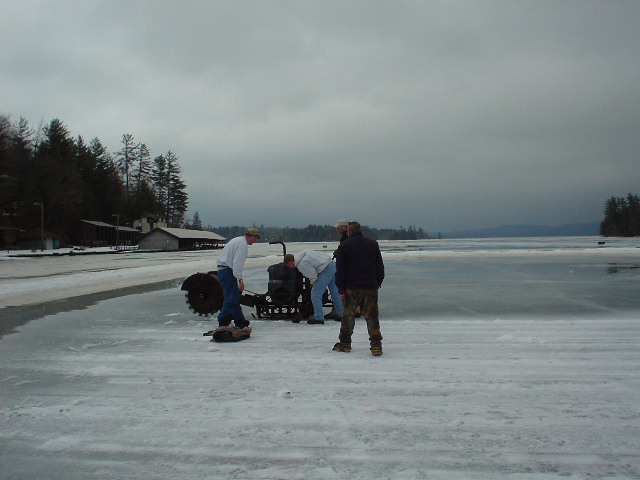
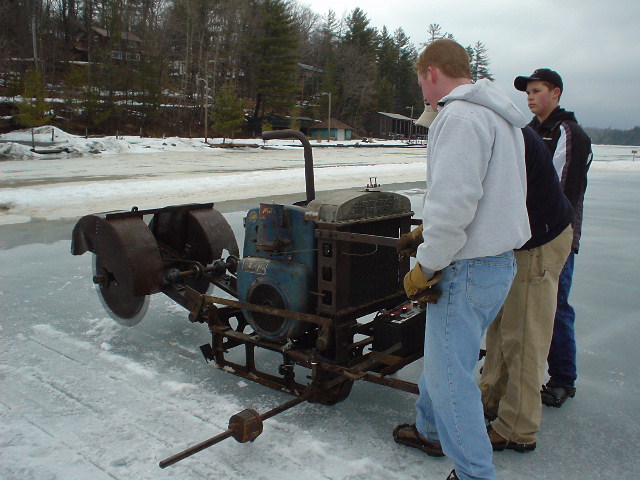
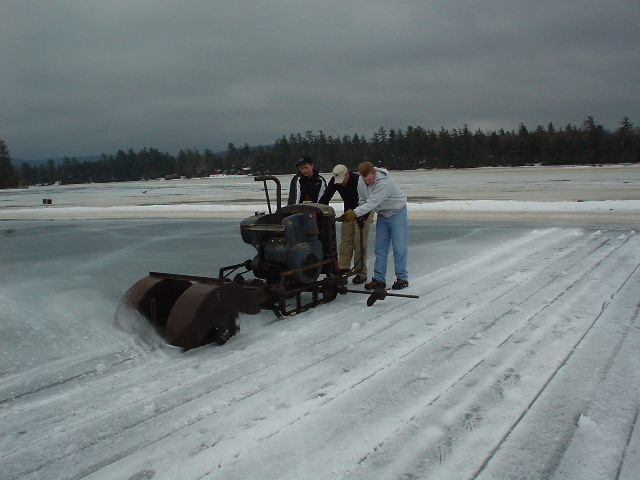
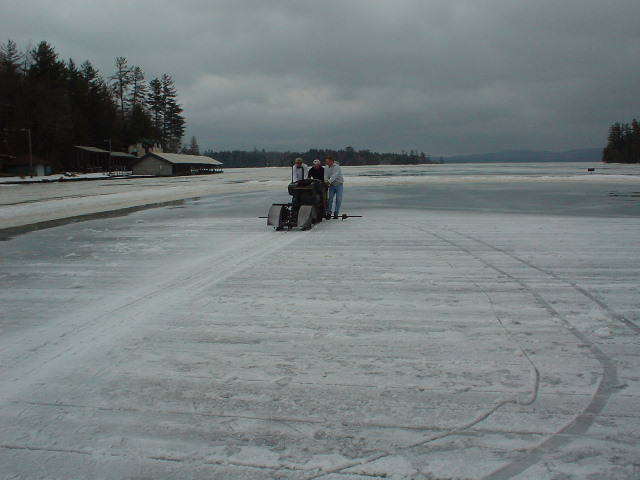
They were just beginning to score the ice field when I got there. This old home-made machine is pulled across the ice field and cuts about 18" deep into the ice with two parallel circular blades.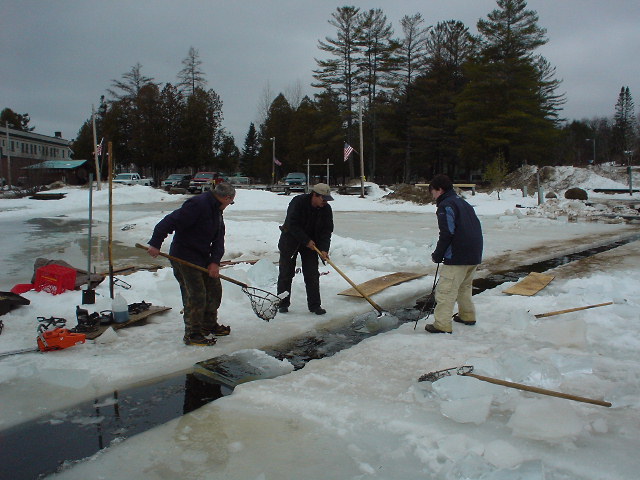
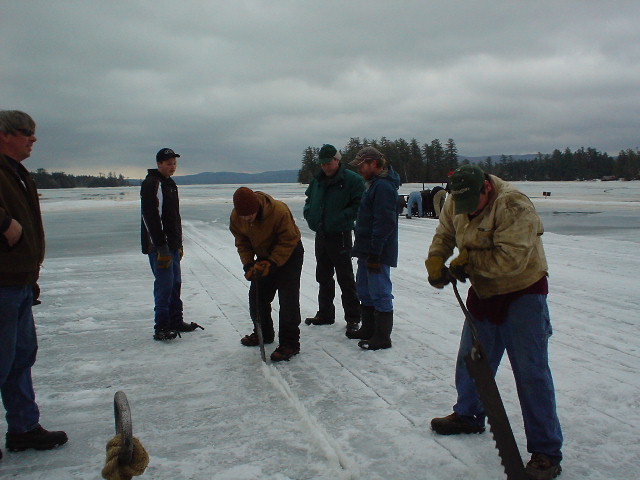
The "channel" that the ice blocks are floated through to the conveyor was already pre-cut out before we started today. The first channel along two perpendicular sides of the scored ice field has to be finished by hand, along each side of the first cut. This is because the machine that scores the ice field has a blade that cuts only about 18 inches deep. The ice was over 24" thick (deep) this year, so the last 6" is cut through with long, single-handled crosscut saws. That's my job. From about 8:30 until past 1 in the afternoon, I traded off sawing with lots of other guys.
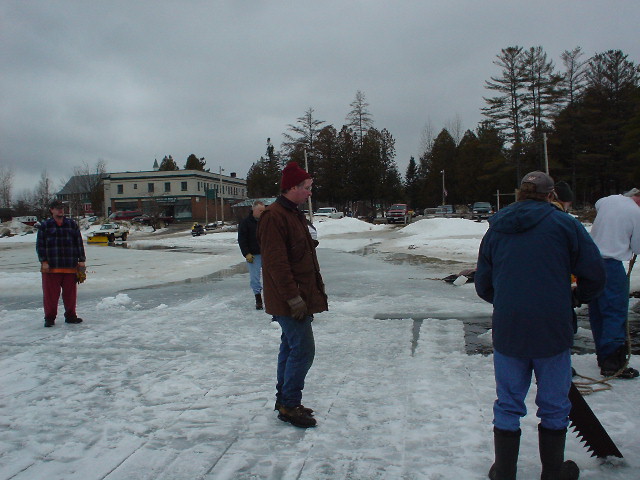
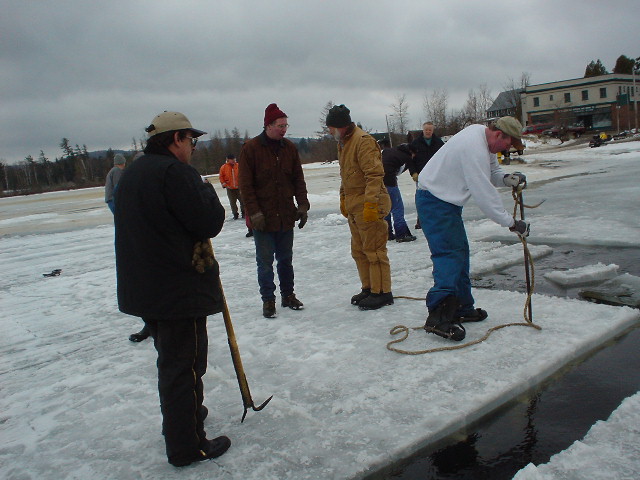
After the first channel on each side is cut, we cut across every 5th block. Then the blocks are broken off with a "pin" which weighs about 50 pounds and is just a pointed crowbar. Tim Dillon in the white shirt is starting things off. The rope around the handle is in case the pin slips and falls into the lake. This has happened many times.
The big building in the background is the "new" icehouse. It is the former annex to the Raquette Lake Inn.
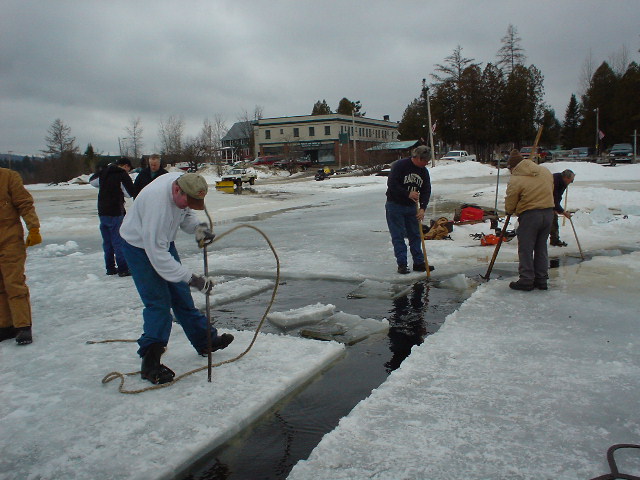
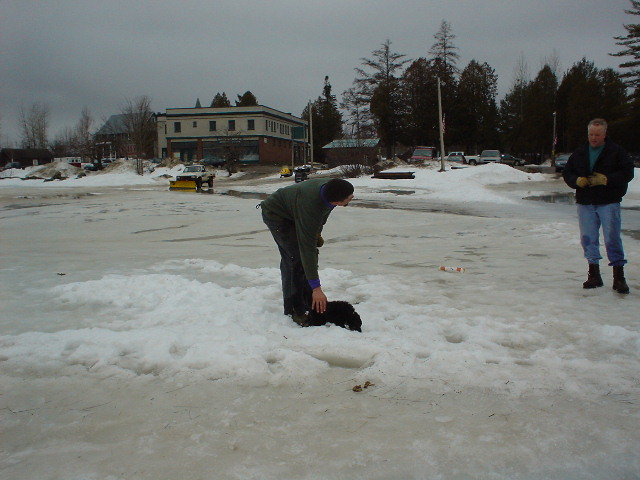
The blocks are floated along the channel to where the conveyor dips into the water. This is another homemade piece of equipment, about three years old. This one does not break down every 10 minutes like the old one did.
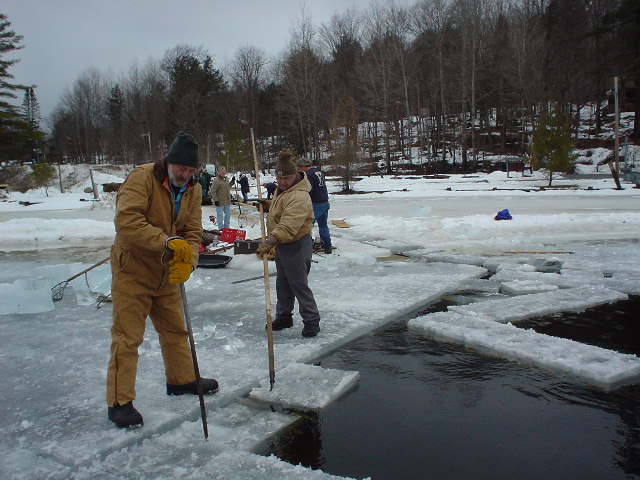
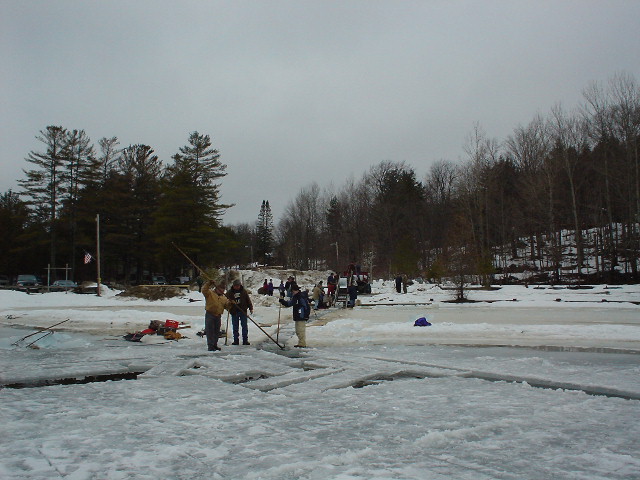
Some close-ups of the scoring machine after all the sawing was done.
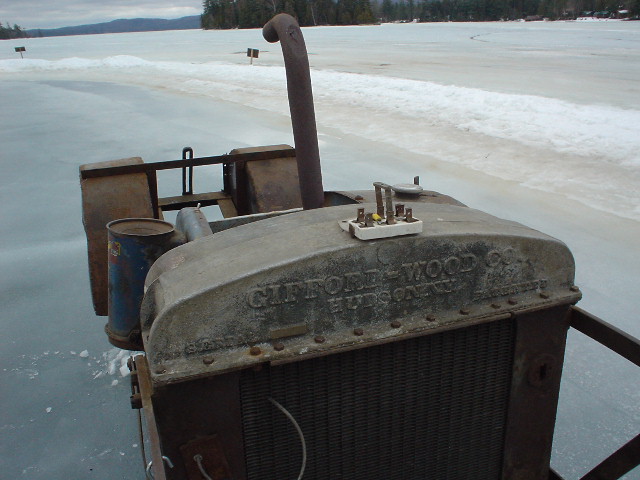
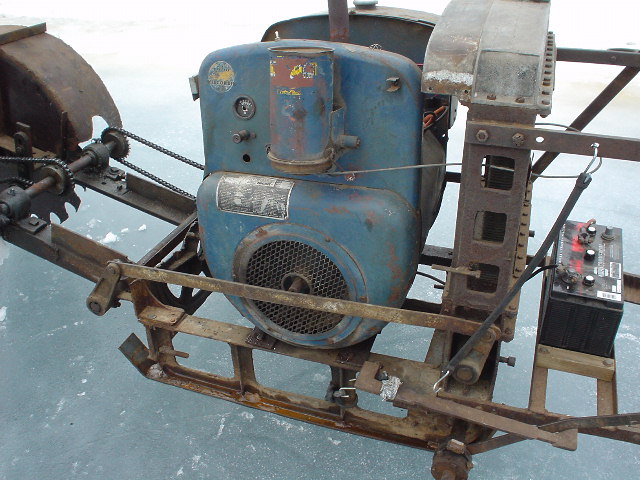
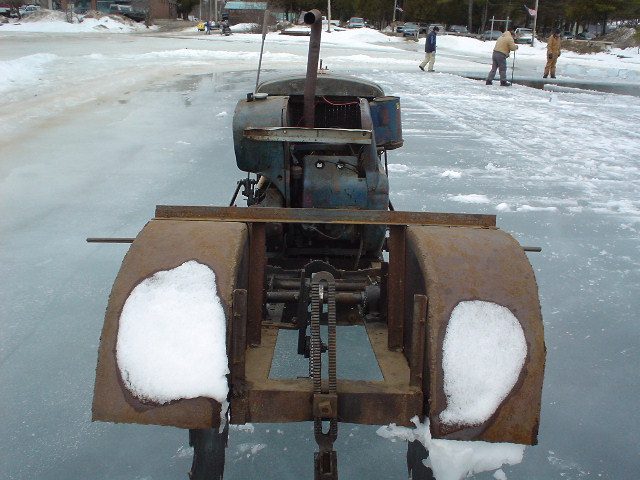
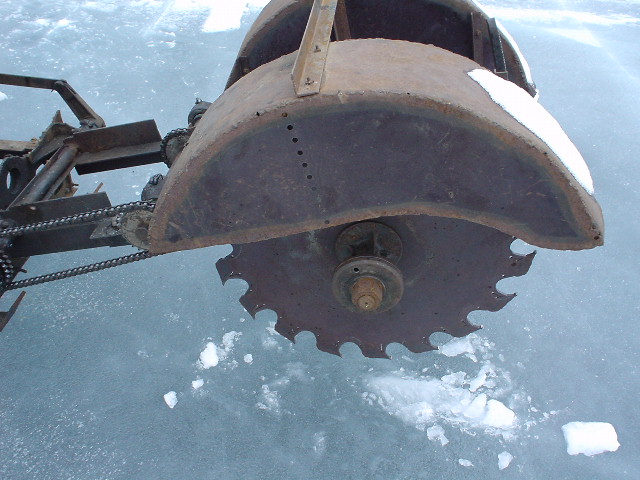
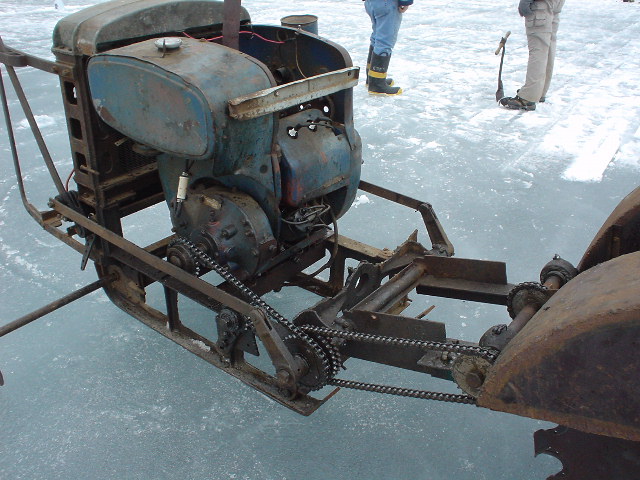
The WW Durant in the background. There were a lot of people inside it watching. None of them came out to saw, though.
WW does not stand for “water wheeler” although it is one. It stands for William West Durant, a rather famous and wealthy Adirondack great camp designer.
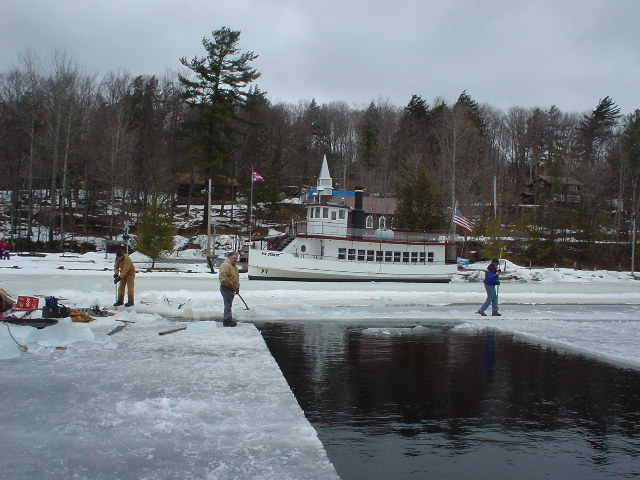
Where there used to be an ice field, now is open water. Up at the icehouse, the blocks are slid off the truck onto a platform, then down a ramp, around a corner, and onto an elevator.
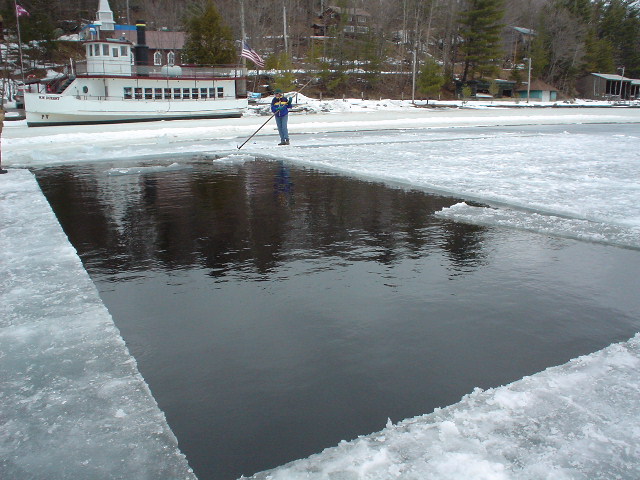
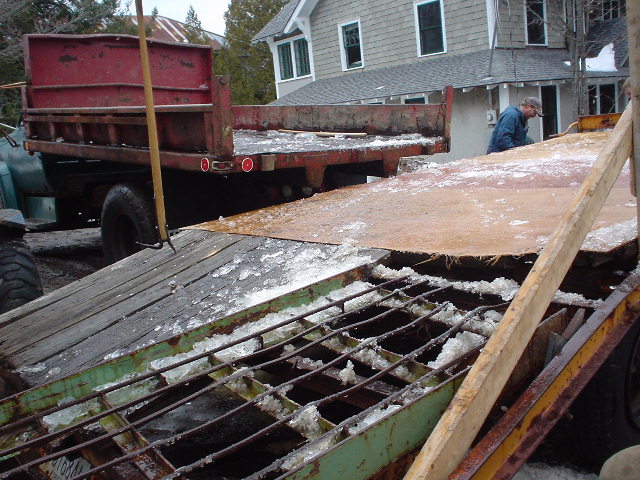
When the truck is empty, the crew is happy!
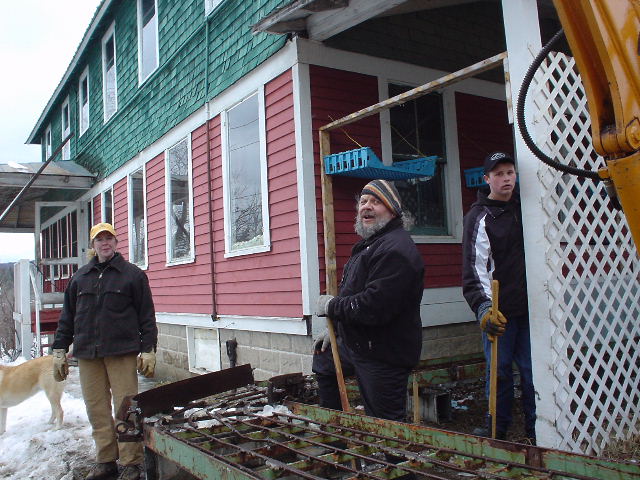
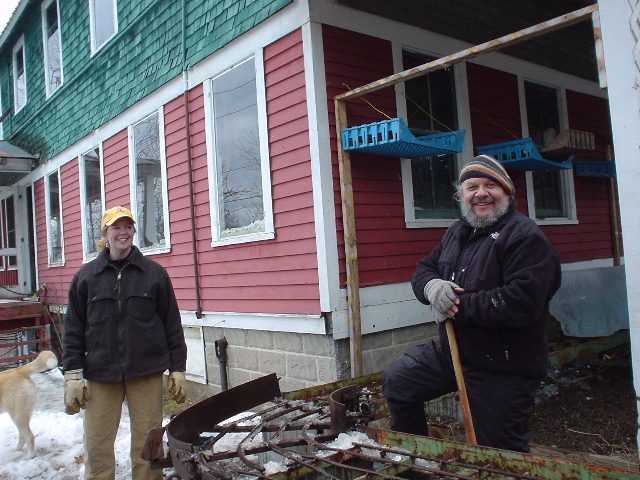
Getting the offload platform just the right height so the blocks don't come down too fast is an art. It keeps people from getting broken as well as keeping the ice blocks from getting broken.
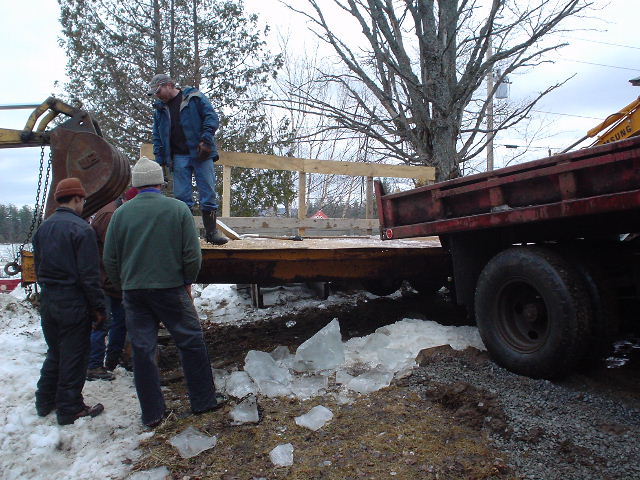
A block of ice is about to enter the elevator, another piece of home made engineering:
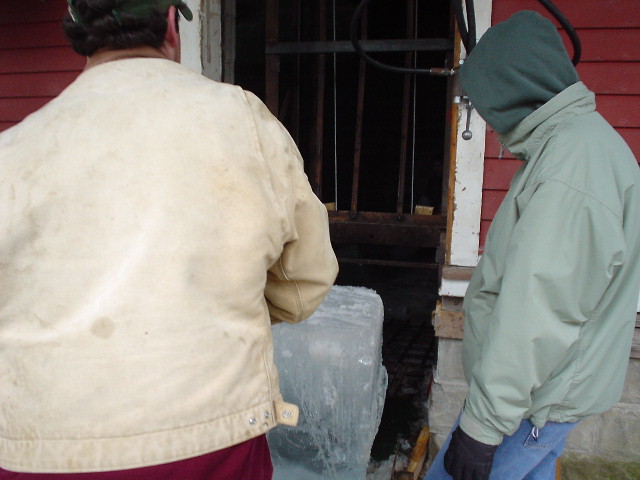
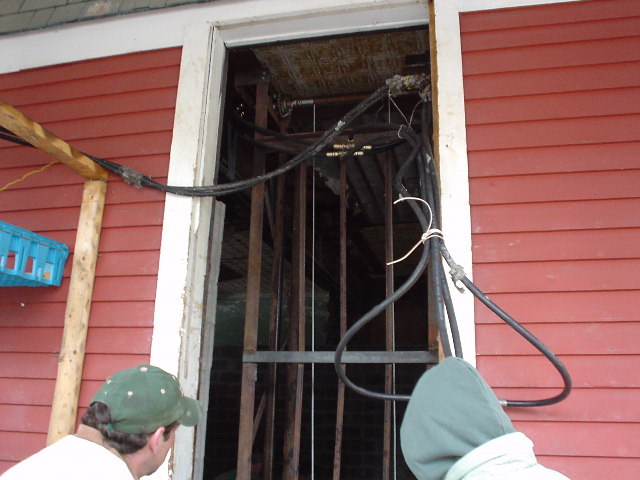
The hydraulic lines power the elevator up and down to offload each block at the correct height for the ice house team inside to handle safely. Well, not safely, but less dangerously.
The following photos are from the "back door" to the ice house. Maureen took me up there to see how the team works inside. These guys are all strong and fast. The blocks come sliding down the ramp and you had better not be in the way. They will break anybody's leg. These guys work very hard every year and trust each other. When the truck is empty, the crew is happy!
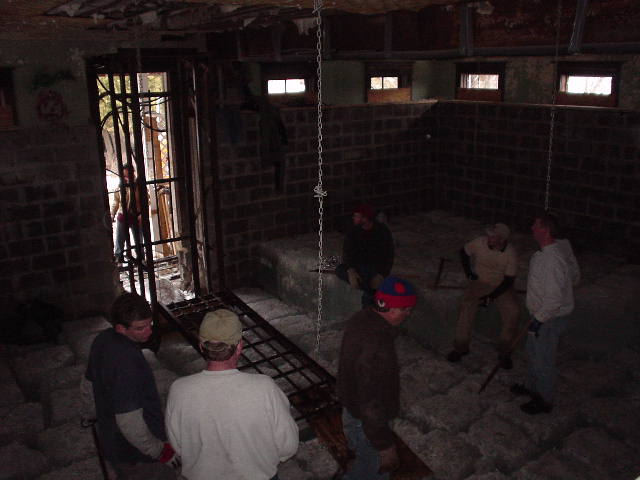
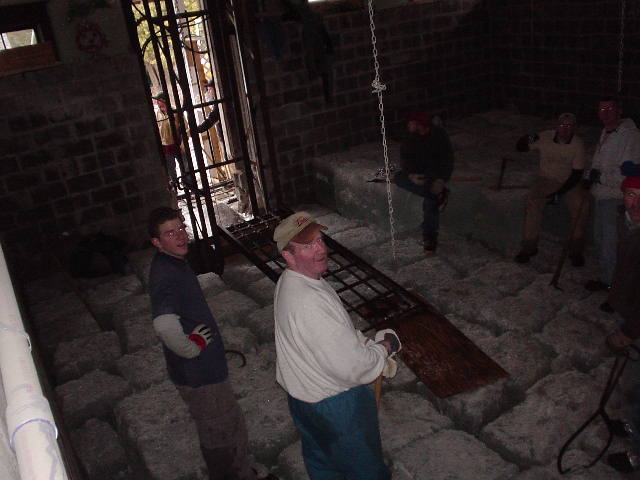
Each tier requires a different elevator setting. There will be 6 tiers when they are finished, and not much room between the top tier and the ceiling. Turn on the flash, you eejit!
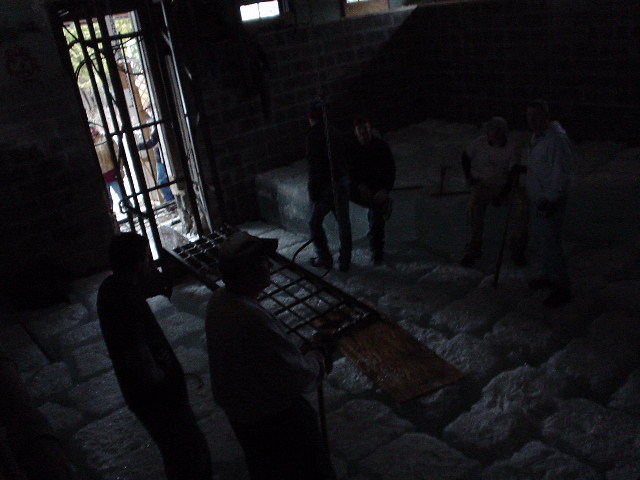
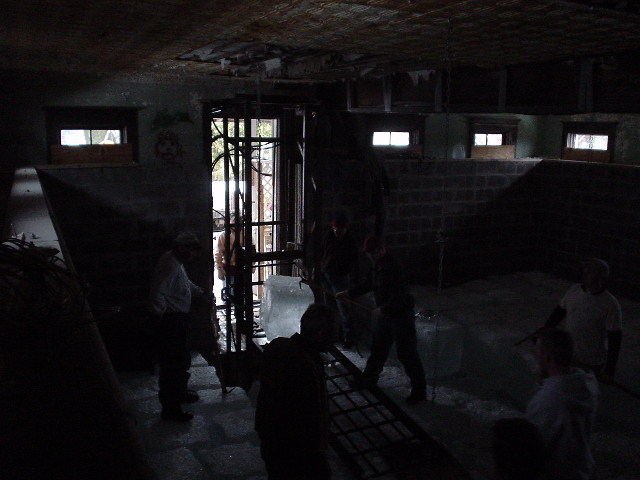
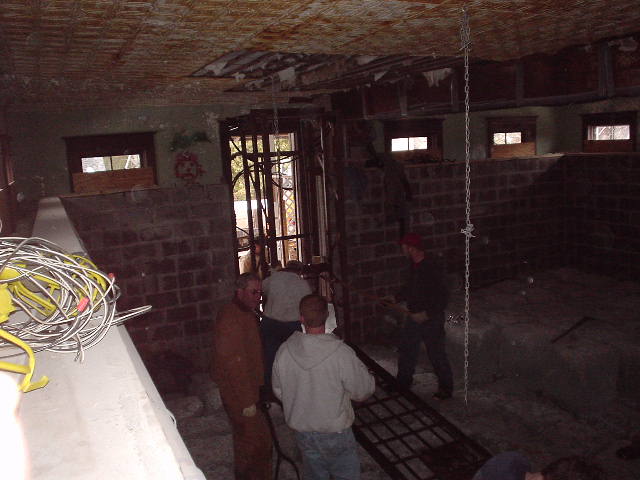
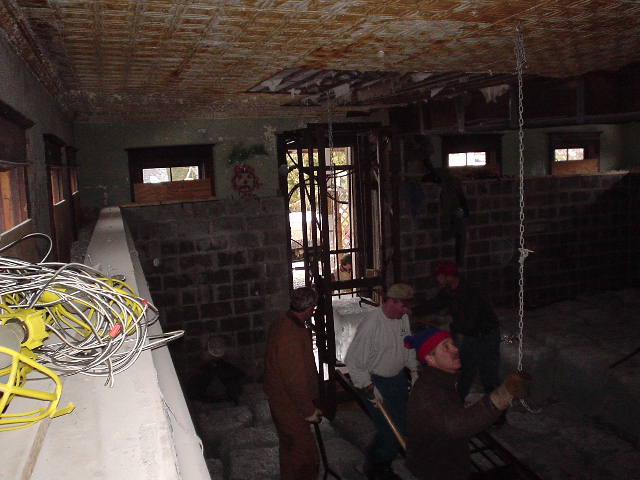
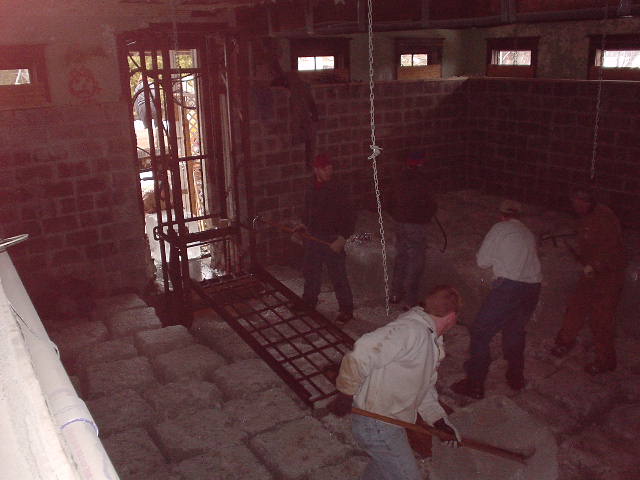
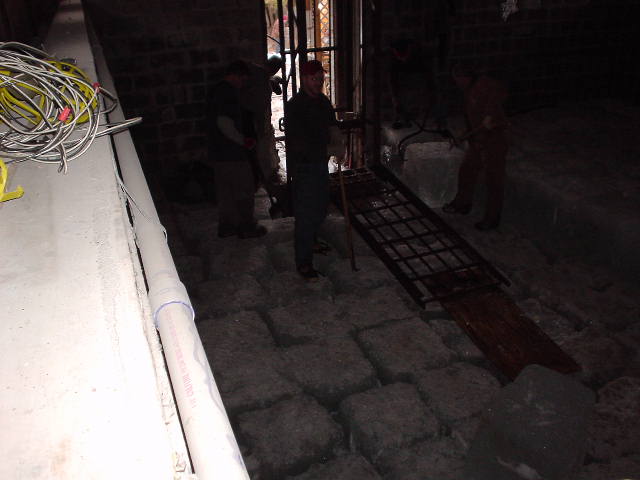
This is the old metal ceiling from the annex:
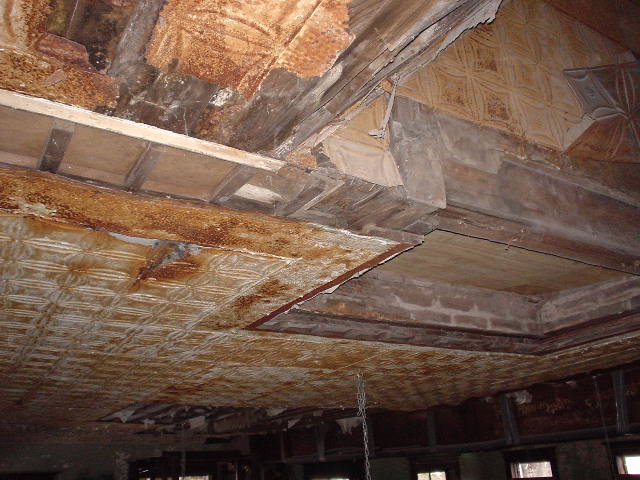
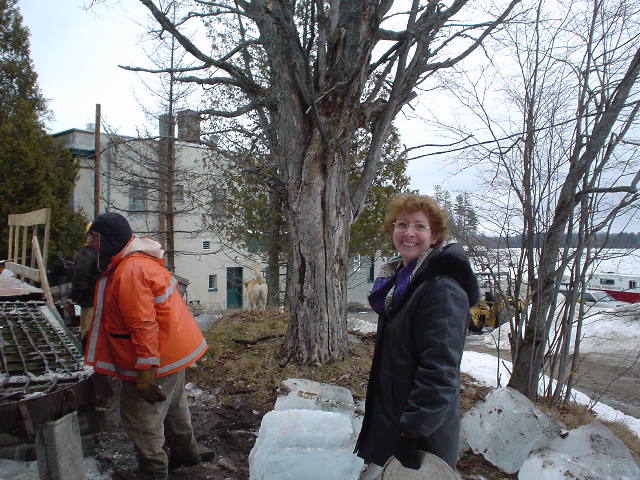
Outside, more blocks come slinging off the truck. Here's my friend Maureen, checking out how soon dinner needs to be ready. Sadly, Maureen passed away from cancer December 10, 2016.